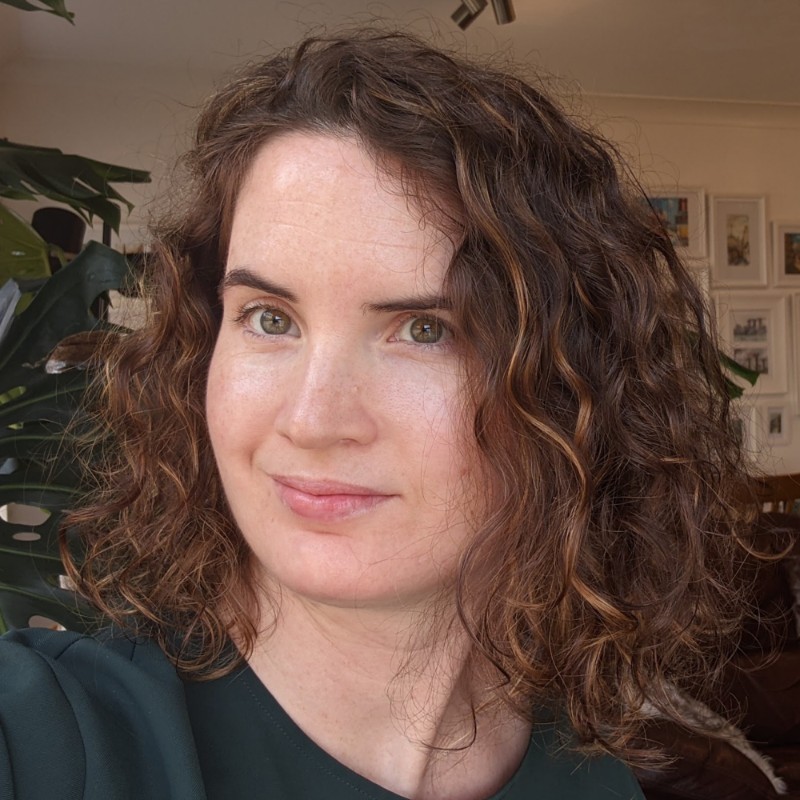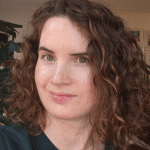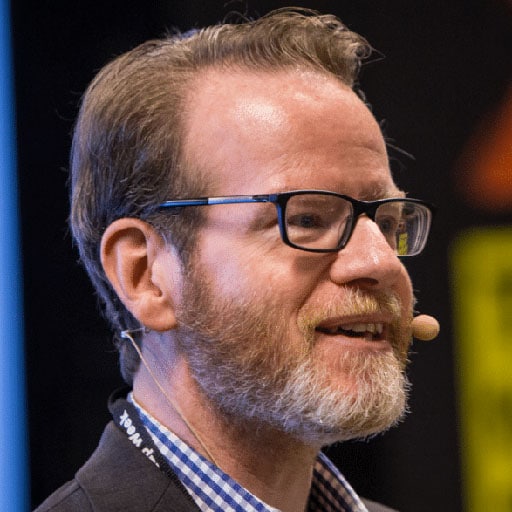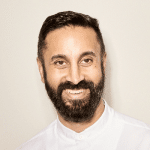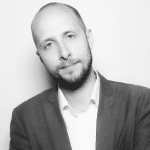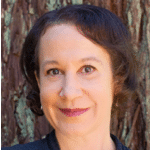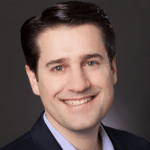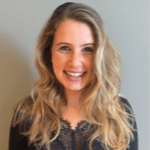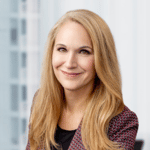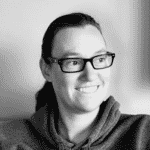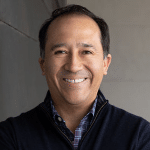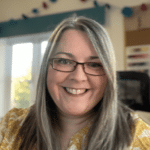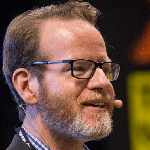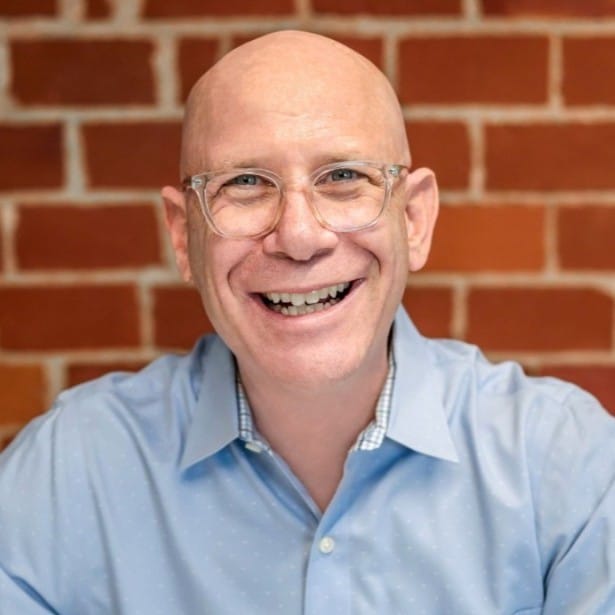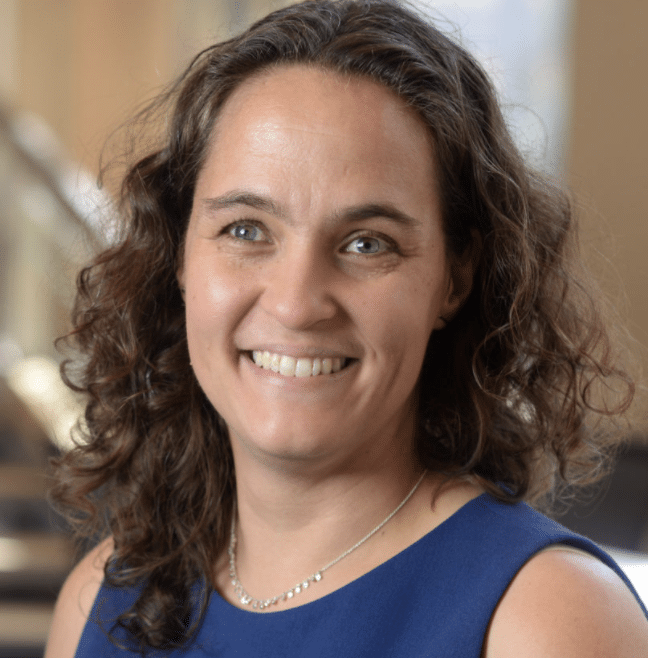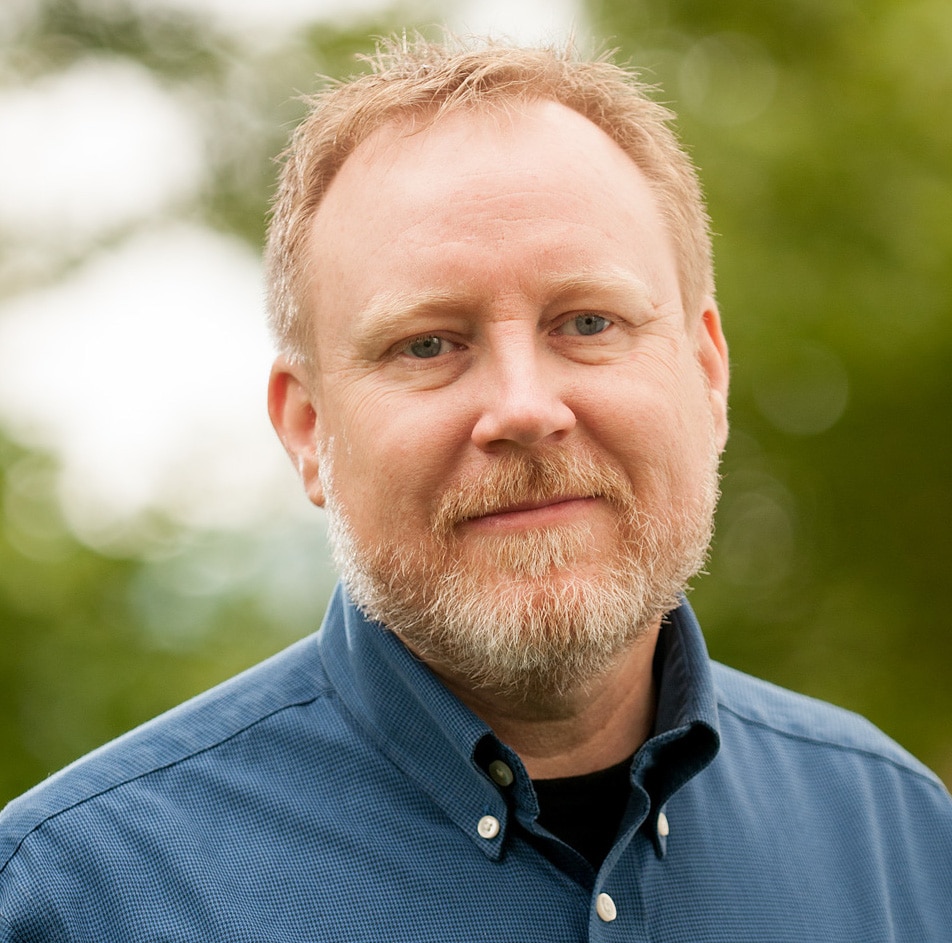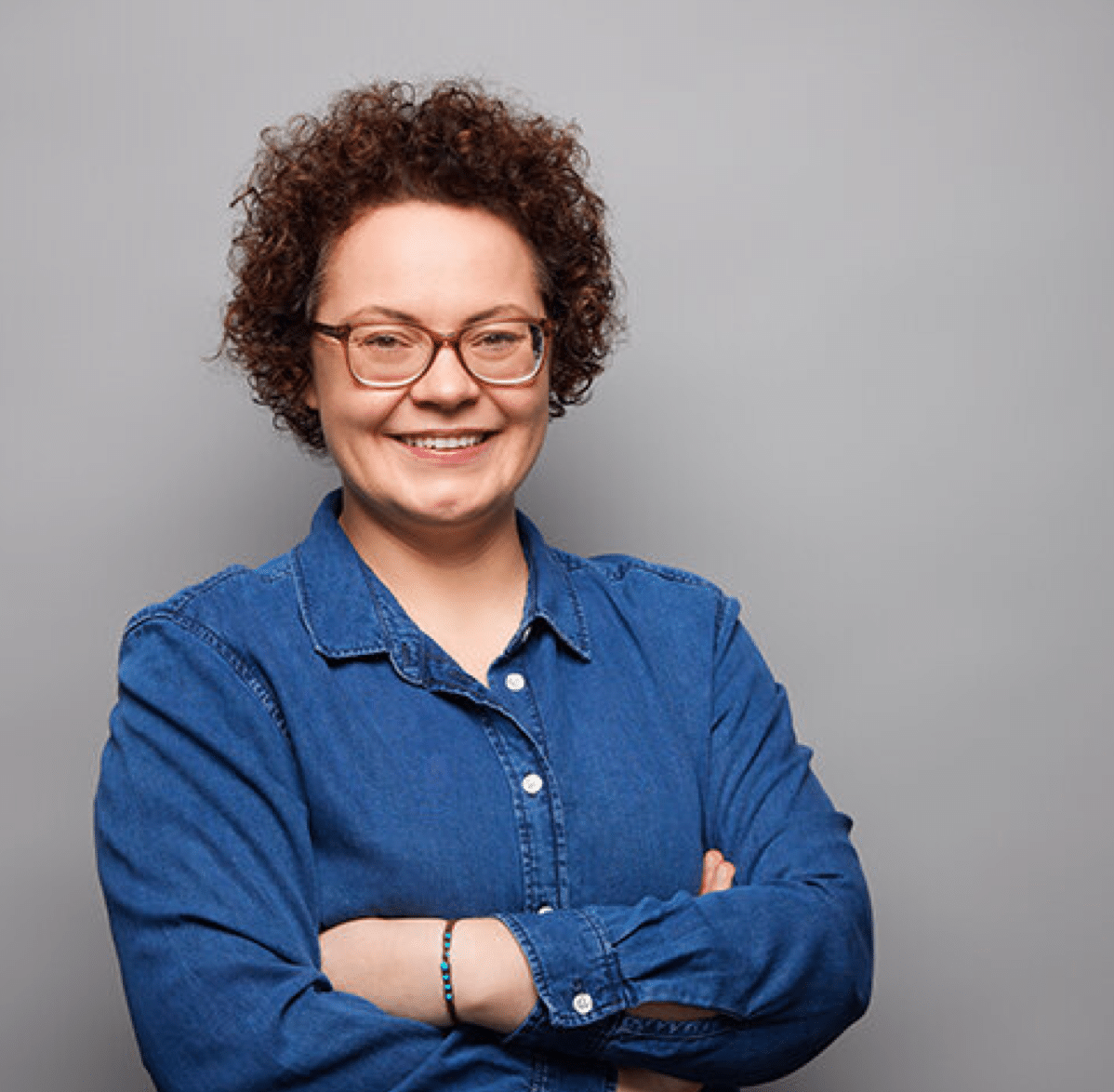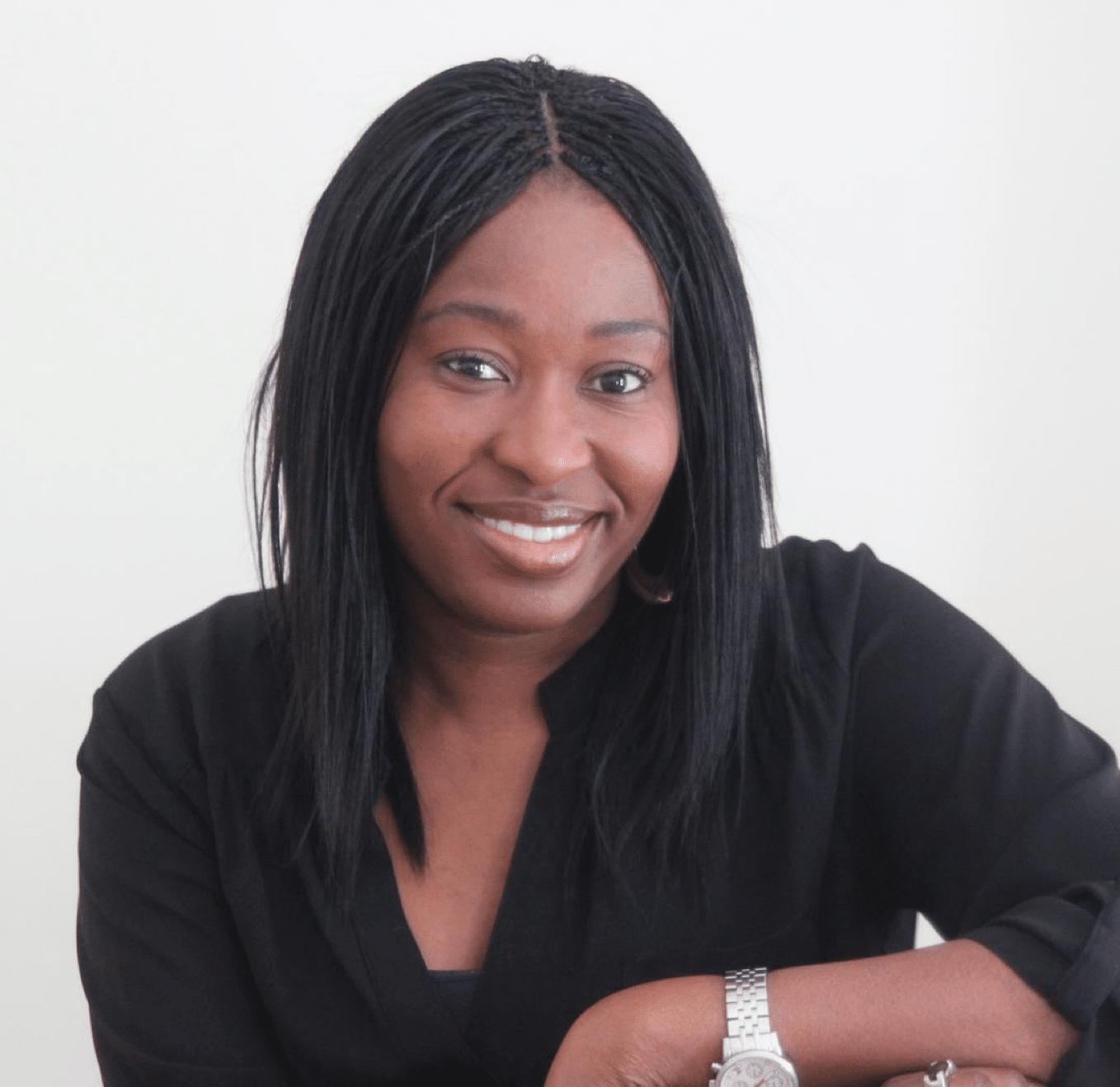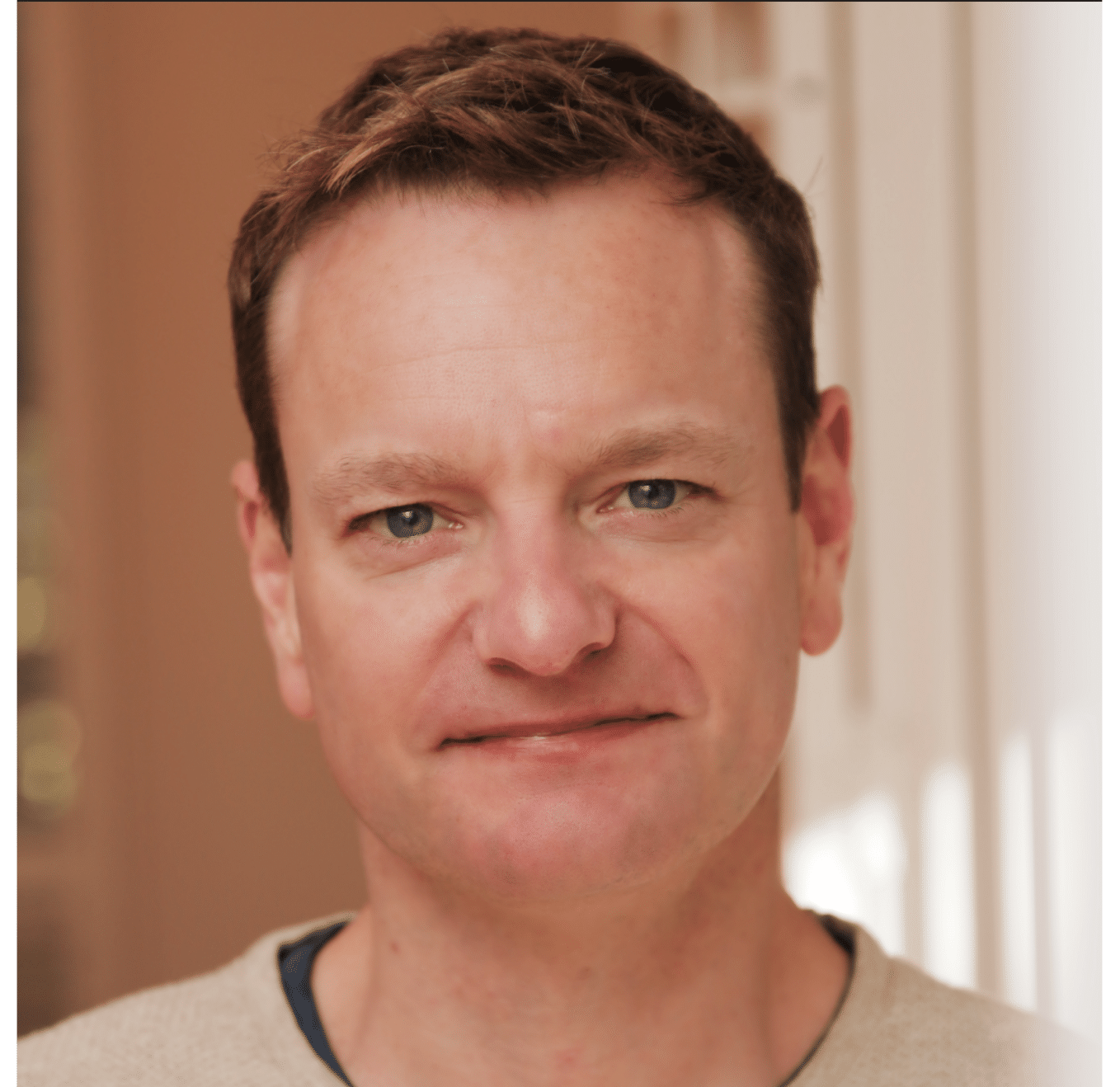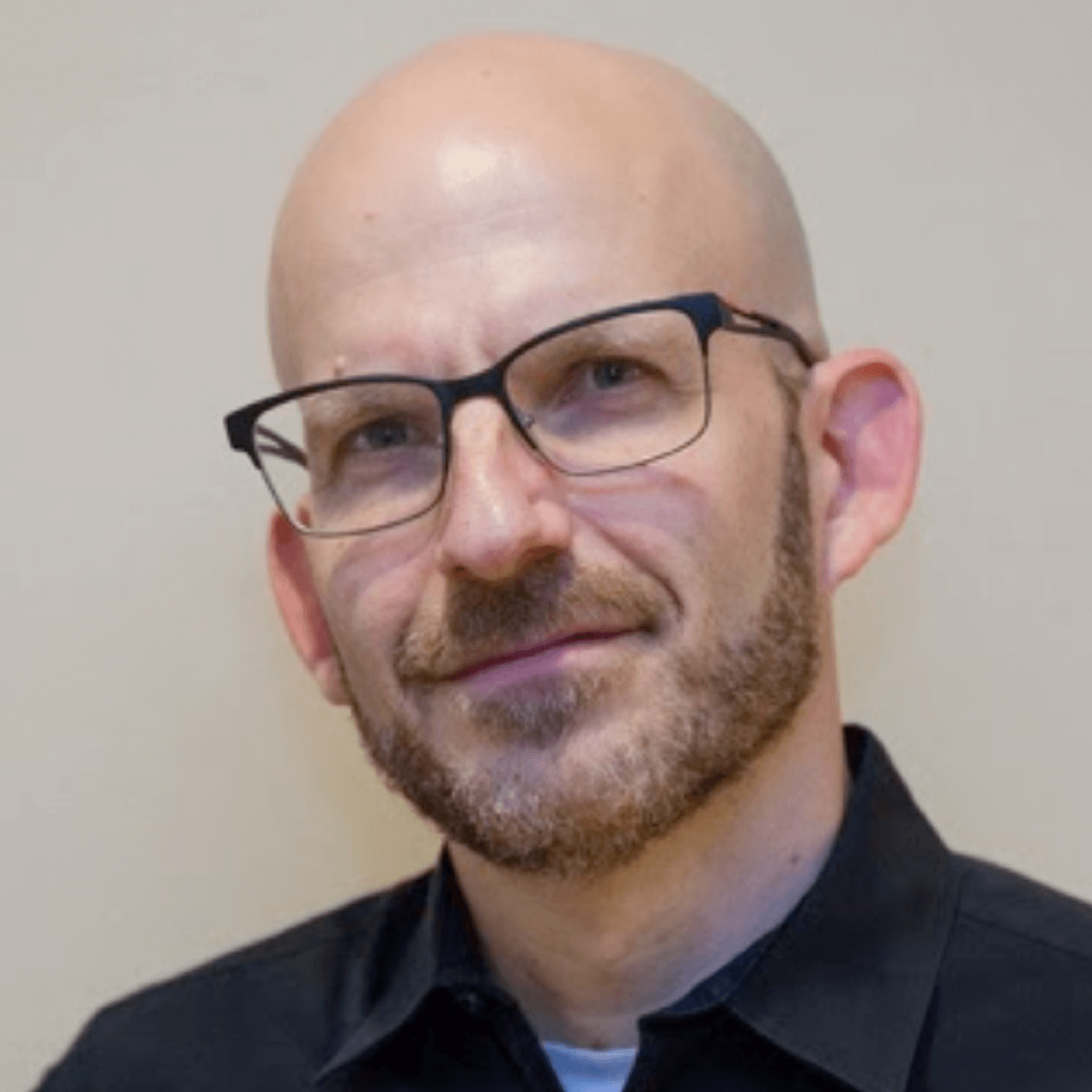Product Management Webinar: Building Impactful Products
Product Management Principles: Building Impactful Products with Gabrielle Bufrem
Deciding what to build takes effort but how can you ensure you’re building it to success? What prioritization frameworks are actually useful and which just don’t hack it?
In this month’s webinar, we explore a product management principle of how to build products that are impactful and built for success. You’ll be joined by Gabrielle Bufrem, Product Coach’, and host Janna Bastow, CEO of ProdPad and inventor of the Now/Next/Later roadmap.
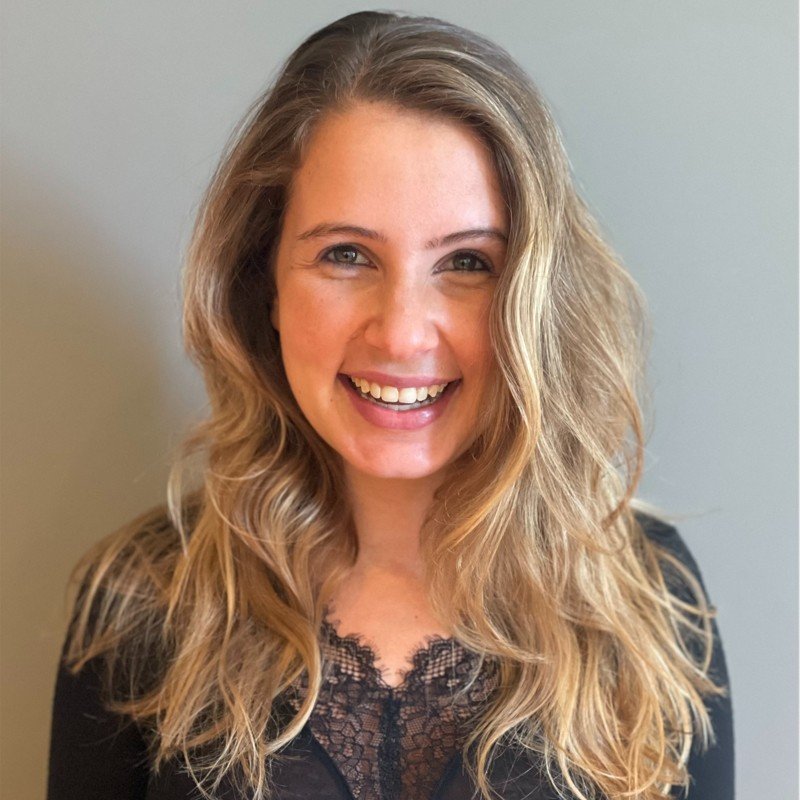
About Gabrielle Bufrem
Gabrielle Bufrem is a fractional CPO and Product Coach. She also runs a course on Building Impactful Products. Previously, she was the Head of Product at Little Otter Health – a mental health for kids startup that raised over 22M. During her time at Little Otter, Gabrielle increased LTV by 40% and improved conversion by 70% by making diligent decisions about what to focus on, what to build, and what not to build.
She has trained hundreds of Product Managers from startups to Fortune 500 companies for over four years through Mind the Product. She is a speaker at conferences around the world where she talks about product leadership, decision-making, and building impactful products. Before Little Otter, Gabrielle worked for Pivotal Labs (acquired by VMware). She was part of the seed team that opened their office in Paris where she worked with Renault on their connected car and Orange on their assistance hub. She also worked for their office in Singapore where she worked with the Port of Singapore and rebuilt Singapore Airlines mobile apps (android & iOs). She then moved to San Francisco where she and her team were responsible for unifying seven marketplaces into one to embody the Tanzu brand.
Key Takeaways
- Evaluating why some features flop
- Refactoring business goals
- Identifying opportunities worth solving
- How to ensure your business goals drive focus
- A breakdown of prioritization frameworks

[00:00:00] Janna Bastow: Hello, everybody. Welcome to the Product Expert Fireside Series here, this is the first one of the year. Today’s subject is going to be about building impactful products. We’re joined here by Gabby Bufrem. Gabrielle, say hi.
[00:00:13] Gabrielle Bufrem: Hi, everyone.
[00:00:14] Janna Bastow: So, a little bit about ProdPad before we get started as well. So who here, let us know in the chat, who here has been using ProdPad? Would love to hear from you as well. So ProdPad is the tool that myself and my co-founder built, ’cause we were product managers ourselves. We needed something to help us keep track of ideas and feedback and experiments, and all the objectives that we had. So we built something for ourselves. And at first, it was used internally only, but we started sharing with the product people around us and we realized that ProdPad was giving us and others control and organization, and transparency.
It created this single source of truth for all those product decisions, and it’s not being used by thousands of teams around the world. You can actually try it for free. You could jump in right after this webinar and start trying it around trying it out. We’d love to get your feedback on that. You can try it with example data as well. We have what we call a sandbox mode. The sandbox mode is basically a version of ProdPad that’s pre-loaded with example data. You can see l- lean roadmaps, OKRs experiments, feedback, all that stuff thrown in there, so you can play with it, see how it all fits together, and see how it might work for your own organization.
And our team is made up of product people. It was founded by product people we’ve got product people throughout the organization, so we’d love your feedback. Jump in, give it a try, and let us know what you think. And of course, as product people, we’re always really proud of the things that we’re constantly building and making a difference out there for you, so one of the latest things that we’ve just launched here is the ability to prioritize with confidence.
So those of you who have used ProdPad for the past years, you know that we have our priority chart, the ability to map out your ideas in terms of impact versus effort, to see where they sit in that across the way when you’re looking at your whole backlog all at once. What we’ve now done is added the ability to map out those ideas based on confidence as well. So you can see which ideas are low confidence, very low confidence which ones you’ve built up enough confidence in that you should start working on.
So you can now use this color guide to get a good idea as to where these ideas are. And then start figuring out which of those you should start b- putting on the roadmap, and which ones you might wanna hold back until you’ve got a little bit more confidence in. So something new in there, it is in beta for those of you who have been using ProdPad, you know that we’ve got a beta mode. Very easy to switch on or off if you’re not into that. Most of our customers are. Gives you a chance to try out the new stuff we’ve got. This is the newest thing so jump in there, try it out, let us know.
So all that said and done out of the way, I am really excited to introduce you officially to Gabby Bufram. So I’ve known Gabby for, I looked it up, actually, Gabby, the other day, s- six years ago, we met at Lean Startup Summit in Amsterdam.
[00:02:58] Gabrielle Bufrem: Yeah.
[00:02:59] Janna Bastow: We were both leading round tables there, if you remember. And you were leading one on data and metrics, I was leading one about product culture.
[00:03:06] Gabrielle Bufrem: Yeah.
[00:03:07] Janna Bastow: And we ended up hanging out lunchtime, right? And we just hit it off. We ended up talking about product stuff.
[00:03:12] Gabrielle Bufrem: Yeah.
We
[00:03:12] Janna Bastow: ended up hanging out in product hotspots all around the world in the years since then. And by product hotspots, I mean product conferences that we both end up at.
[00:03:20] Gabrielle Bufrem: Yeah. [laughs]
[00:03:20] Janna Bastow: So this is why I’m so excited to have Gabby as my very first guest of the year and she’s gonna be talking about building impactful products. Now, a little bit about Gabby. She is a factional CPO, chief product officer, and a product coach. She’s previously served as head of product at the mental health startup, Little Otter Health, where she increased LTV by 40% and improved conversion by 70%, which is huge. She’s trained product managers for over four years, through Mind the Product, and is a speaker at conferences worldwide. And prior to Little, Little Otter, Gabrielle worked at Pivotal Labs in Paris and Singapore, where she worked with companies like Renault Orange and the Port of Singapore, and rebuilt Singapore Airlines mobile apps. And she also runs a course on building impactful products, which is exactly the topic of today’s conversation. So welcome Gabby. Thank you so much for taking the time to chat with us today. Great to have you here.
[00:04:18] Gabrielle Bufrem: Yeah, thank you so much. Wow. It was an incredible introduction. I am so excited to be here. Getting to hang out with you in general is really fun, and now I get to hang out with you and answer everyone’s questions, and, I mean, I can watch this again. This will be great.
[00:04:32] Janna Bastow: [laughs] Excellent. Thanks so much again. So I would actually love to hear from your point of view. I mean, you don’t often get the chance to talk to people who are fractional CPOs. Like, what does that mean?
[00:04:42] Gabrielle Bufrem: Yeah.
[00:04:42] Janna Bastow: What’s the, what’s the day in the life with you?
[00:04:45] Gabrielle Bufrem: Totally, absolutely. So I have, like, a couple companies that I work with, and these are normally super small startups. They’re, like, series A or they’re gonna raise a series A, and they realize that they need product help and that they mostly need product leadership help. They also realize that they probably only have one product manager [laughs] so hiring a head of product or a CPO would be a really expensive hire, especially in this market.
So what I mostly do as fractional CPO is coach the founder, coach that product manager, and help them out with product strategy, team topology really figuring out where they need to focus on. And I do that kind of part-time for a few different companies.
[00:05:27] Janna Bastow: Right, okay. That makes sense. And so h- how do you end up getting involved with these types of companies? I mean, e- are these companies who are at a particular stage, or companies who are in between CPOs?
[00:05:36] Gabrielle Bufrem: Yeah. I think there was, like, definitely a range. For me, it’s mostly, like really early stage startups that have that need, identify that need with their founder who’s not a product person, or that they’ve done everything that they can and they now need more help, and they reach out to me normally or I get introduced to them through an investor or someone that we mutually know in common. We normally have, like, a date or… that I like to call, it’s just like, we hang out, we see if we like each other, we see if, like, we vibe, and if we work well together.
And then I have an entire conversation of, like, what does success look like? What is great if we crush it? Where do we go? What does that look like? How much value does that have? And that’s where I normally kick off any sort of kind of fractional CPO work.
[00:06:22] Janna Bastow: Right, okay. Yeah, I can definitely see the value of that. I mean, having been a product person who’s transitioned into a product-minded founder- CEO.
Having to go through that awkward period of, oh wait, when do I let go of the product? And who do I let that go to? I mean, I was fortunate, I was able to hire somebody in the product role who’s, I mean frankly, she’s better at product than I ever was. [
[00:06:42] Gabrielle Bufrem: Yeah. Exactly.
[00:06:43] Janna Bastow: But, yeah, it- I know it’s so hard to, to find that person and to, to let go of that role. And so to find somebody to do that is amazing.
[00:06:51] Gabrielle Bufrem: Yeah. And I actually think this is, like, potentially kind of a hot take, but I think that it’s really important for founders to own product for a long time. Like, up until, like, really close to product market fit like these are the people that have the vision, they are the ones that really imagine this product coming to life, and what I really love to do is help these people get there. So I- I have the expertise and I’ve done it before, so I can help them.
But I normally advise founders to not hire really senior product leaders super early, first, because these people are not gonna get to do what they love the most which is lead and empower and coach other people ideally they’re gonna have to do a lot of kind of like icy product work, which I mean, I can speak for myself, like I am w- a way worse product manager than I ever was because I just haven’t don’t it in a long time. I have led teams, I have led multiple teams, and that’s a very different skillset that, I mean, thankfully, I’m, I’m good at that, but I have definitely lost a lot of my, like, icy muscles. So, like, having to flex both and do both extremely well is really rare.
[00:07:57] Janna Bastow: Yeah, yeah. That’s a, that’s a really fair point. And actually, I wanna back up to a point that you made was that, turning point around the product market fit.
[00:08:05] Gabrielle Bufrem: Yeah.
[00:08:05] Janna Bastow: Like, what do you consider product market fit? And there’s no wrong answer ’cause I think everyone has a different definition of it. [laughs]
[00:08:11] Gabrielle Bufrem: Yeah, yeah. I think everyone has a different definition of it. I think today, I’ll have an answer and like tomorrow, it might be different. I don’t know. But especially in this case around, like, me evaluating if a company has enough product market fit for me to come in, is that there is enough desire in the market, that as, like, shitty or as difficult as the product is to use, because I mean, anyone that has been at a [inaudible 00:12:38] side of here knows that, like, everything is broken at the beginning people still wanna use it.
And there is, like, enough traction that you feel that if you make some things better, if you invest in certain areas like this, they could take off. So it’s at that point, if you think about the, like, walking to the skateboard to whatever, that you’re like turning from like the bike to the car.
[00:08:57] Janna Bastow: Right.
[00:08:57] Gabrielle Bufrem: That’s when I think it, it really kind of is showing that the market is there and ready to accept it.
[00:09:03] Janna Bastow: Yeah, no, that, that makes a lot of sense. And actually, I look back on ProdPad and remember those days when everything was, i- myself, my co-founder coded the first version and I remember being overrun with support tickets with people going, “Well, want it to do this, we want it to do this.”
[00:09:16] Gabrielle Bufrem: Yeah.
[00:09:16] Janna Bastow: But we still, we’re still using it. We’re like, “Okay, thanks.” [laughs]
[00:09:18] Gabrielle Bufrem: Yeah. Exactly. Yeah, yeah, yeah. Or people are like complaining about your product on your product, but you’re like, “Okay, well, clearly you don’t hate it that much.”
[00:09:27] Janna Bastow: Yeah.
[00:09:27] Gabrielle Bufrem: Like, you’re still here, so like that’s good.
[00:09:29] Janna Bastow: You feel that pull, you feel that pull.
[00:09:30] Gabrielle Bufrem: Yes.
[00:09:30] Janna Bastow: And I think that’s the one thing that’s really resonated with me, is you feel that pull and I’m like, “Okay, yeah, that, that resonates.” Yeah.
[00:09:36] Gabrielle Bufrem: Yeah, yeah. Exactly. I think there’s also, like, the financials, right? Like, you’re making, like… you’re starting to make like enough money that you’re like, “Okay, this is, like, more than a hobby. This is, like, for real.” And there is, like, a real path towards this, like, raising more money to accelerate this versus like how to pivot or do something completely different.
[00:09:54] Janna Bastow: Right, yeah. And I guess it’s the key thing, is that you need to have that pull that’s driving that money before you bring in that, that product leader.
[00:10:03] Gabrielle Bufrem: Yes.
[00:10:03] Janna Bastow: Bringing in that product leader isn’t necessarily gonna be the thing that does that, that, that catalyzes that change, is it?
[00:10:10] Gabrielle Bufrem: Yeah, I don’t think so. I think it’s really on the founders to get there, and I think, like, people like me or other product coaches or fractional CPOs, like, can help and, like, we, we love working with startups ’cause it’s really, really fun and, I mean, a lot of us, like, ended up doing that before and, like, are really drawn to the space. But I really do think it’s on the founders. And it’s a really hard job as, like, a product leader if the thing is not kind of ready yet, because you come in, if you do exceptionally well, like, you have been given, like, all the reigns, of the founder’s ready to give product up, there’s like all these things that need to be true in order for you to do really well.
If you crush it, it’s like on the founders and of course, like, on you too, but it’s like mostly on the founders of like, oh my God, you got there. And if you don’t do well, it’s like 100% on you because, like, it is the product. So it’s a really, like, tricky position, and I think that there isn’t, like, yet, just like a clear metric of what product market fit is but when people are thinking about taking on really early leadership roles in companies, is a conversation I advise people to have in terms of what they consider product market fit, how much the founder’s really ready to give it up or not. And most of the companies I help, really early stage, the founder is not ready to give it up and I tell them that they shouldn’t. They should keep it. But they can call me if they need help.
[00:11:28] Janna Bastow: Yeah. That makes sense. And this actually draws to mind I think it was a tweet thread that I’d seen with a bunch of screenshots, which was a lot of people in the thread were making fun of Bill Gates, because he was micromanaging. It was this email from Bill Gates to some leaders in his team or maybe ICs in his team, I don’t know, but he was complaining in a ton of detail about how difficult it was to install, oh I can’t remember what it was, some movie making app or something like this, onto windows, whatever, was it Vista back then or XP or something like that, right?
[00:12:01] Gabrielle Bufrem: Yeah.
[00:12:01] Janna Bastow: And it was in quite detail, like it was walking through everything that had gone wrong and how long it took and, you know, how he had to do this and it asked him to reboot, and all these other steps. And, you know, some people are saying, “Oh, well, what’s Bill Gates doing, you know, a CEO-“
[00:12:16] Gabrielle Bufrem: Yeah.
[00:12:16] Janna Bastow: “… doing, you know, right down in the guts, doing that? He should be up here.” And it’s like, well actually, no one else is going to care to that detail to report something that’s that… of that level. But actually, you know, being able to install an app on your OS is actually pretty critical, so somebody does need to report it to that level of detail. And sorry, but if you’re, if you’re not willing to report it as a CEO, then no one else is going to.
[00:12:40] Gabrielle Bufrem: Yeah.
[00:12:40] Janna Bastow: You can’t rely on your customers necessarily doing so, when you’re in those early stages of building, sorry, a crap product. Or like Windows is kind of doing, they were going through like a, a, a trough, I think, it kind of it sloped downwards at that point. I mean, he was trying to bring it back up to some level of quality.
[00:12:55] Gabrielle Bufrem: Yeah. Yeah, exactly. I think, like, I definitely told CEOs, you need to be more involved, I’ve told CEOs you need to be less involved. There’s like, again in product, there’s like no right answer, right? There, there are people that, like, they are so involved that, like, slack is just them being like, “Hey, this doesn’t work yet, that doesn’t work yet.” I’m like, “Hmm, let’s like, not do that anymore.”
[00:13:14] Janna Bastow: Yeah. Yeah.
[00:13:14] Gabrielle Bufrem: The team knows, they’re aware, right? But the highlighting and also the compiling of like the strategic context around what the team needs to execute and why that’s something I want them really involved in.
[00:13:26] Janna Bastow: Yeah, that makes sense. And, you know, this is something we’ve had conversations around in the past, is like, how much the product manager has to play an active role in managing the people around them, but not just managing down or managing, you know influencing around them but also influencing upwards.
[00:13:43] Gabrielle Bufrem: Yeah. I mean, I think that that’s a huge skill for any product manager, and senior PM, and anyone, honestly, that wants to go into product leadership moving forward, because most of what you do, and I really like thinking about, and whenever I coach people, I think about, like, people, product, process. And I want people to have enough knowledge about the product, that’s very important, I want them to have, like, the process skills to be a PM, but I tell people, like, if you wanna be a leader, like the people thing is what we should focus on the most.
Like, I wanna just spend, I don’t know, 50% of our time or more in this area because it’s really what takes you from being an IC to actually being, like, a leader and that’s something I look at when I am both now coaching people, but before when I was managing people, it’s like when I need to elevate someone, can they influence me? Can they influence someone else? Can they really present a case that is compelling and clear on why we need to do something that resonates with senior leadership?
[00:14:46] Janna Bastow: Right. Yeah. Now, there’s no way that that comes entirely natural. I mean, you look like a natural when you’re doing it, I’ve seen you slide into all sorts of companies and sort of make things happen, but I mean, how did you develop that skill?
[00:14:57] Gabrielle Bufrem: The skill around, like, influencing people?
[00:14:59] Janna Bastow: Yeah.
[00:15:00] Gabrielle Bufrem: Yeah. I mean, I think the biggest thing for me that was like an unlocker, so I’m, I’m from Brazil originally, I spoke Portuguese my whole life. And I started learning languages pretty early and I was always very curious and interested in languages like I’ve taught myself like English for a little bit and I created my own like, little method and I always wanted to learn Spanish and French. So I speak these languages now, and I think it was very clear to me that everyone around me had a very different desire than what I had.
And I think the unlocker was realizing that that desire is not wrong, it’s just their desire, it’s what they want. And it’s almost like a different language. So I say to people that, like, really good PMs and PMs that are extremely compelling are incredible translators because you need to be saying what you’re saying but in a way that resonates with other people. So when I’m talking to sales people, I need to first understand, almost like a user interview, like what matters to you? Like, what brings you joy? Like, what do you like? What do you enjoy? How do you like to work together?
And at least with sale for example, I learned that it’s a lot around building trust. First, they’re like commissions-based, they have things they need to hit they also need to trust me that I’m gonna help them get there. So if you know what people are looking for, I think it’s way easier to talk to them in a way that it resonates.
[00:16:16] Janna Bastow: Right, yeah. No, that’s a, that’s a lot of sense. So what do, what so execs typically want? Are there any hacks or tricks to figuring out what your bosses want, what your investors want, and that sort of thing?
[00:16:26] Gabrielle Bufrem: Yeah, totally. So I think, yeah, my, my top tip is, I would say having this conversation is actually… normally I would have it with my reports, so it’s like, hey, this is what I look for, this is what I’m excited about, all of that. But if someone came to me and was like, “Hey, I wanna understand how I make you look good, I wanna understand how I get you promoted, how I give you success,” I’d be like, “Awesome, yeah, let’s have that conversation. That sounds great.”
Because it shows that both curiosity and also level of care that they wanna make sure we all succeed as a team, and especially if you’re coming, like, towards someone that’s, like, more senior than you I think is a really powerful conversation. So I think having those conversations, the lining on what great looks like for them and for you, and also how you can help them get there and how h- you can help your team get there is super important.
And I’d also say, the, like, higher up you go, the, the more stuff you have going on, right? So I, when I was a PM, I used to be able to think about product all the time, and then I became a senior PM and I started thinking way more about like strategy and business too, and I became a group PM and I had a product, and my life was like, marketing and ops and [inaudible 00:22:09] like, everything was also a part of it so I had, honestly, way less head space for product stuff.
So this is like contextualizing why I think the higher up you go, the more, like, bullet points, simple, just like really clear, concise communication matters. It’s not because people are not interested and excited about hearing the whole story, it’s because they only have a certain amount of time and honestly just like brain allocation to having that conversation. So if you can simplify it for them like TLDRs, bullet points, like, that is, I think, a really, really awesome way to get through to execs.
[00:18:13] Janna Bastow: Right, yeah. And so it’s all about getting the right level of communication to the right person, and understanding you know, what it is that they are trying to get to.
[00:18:20] Gabrielle Bufrem: Yeah. Absolutely.
[00:18:21] Janna Bastow: You know, one of the things I always like to think about is what they’re incentivized by and if you have aligned incentives, you can make magic happen. If you don’t, then obviously things just grind to an absolute holt.
[00:18:31] Gabrielle Bufrem: Absolutely. And that’s something, I was having a conversation with a company the other day and they were B2B and I told them, like, your sales team needs to have the same objective as the product team. Like, it just needs to be the same, otherwise they are gonna go off, do the thing to get their objective, and we are gonna go off, do our thing to get to our objective, and our objective is actually the same. We wanna sell more and we wanna sell better product.
Like, it’s very simple if you put it that way, but if you make people compete with each other, they will ’cause you have, like, highly motivated type A individuals. So aligning those incentives, I think, is also extremely powerful.
[00:19:06] Janna Bastow: Yeah. And it’s so easy to compete at the detriment of somebody else’s numbers, right? Like, yeah, sure we’ve got more sales orders, but churn’s gone through the floor. Or yeah, sure, like we’re getting things out the door faster, but quality’s gone through the floor.
[00:19:18] Gabrielle Bufrem: Yeah.
[00:19:18] Janna Bastow: Like, it’s, it’s really easy to create these these problems. And so yeah, aligning these these objectives can make a hug difference.
[00:19:26] Gabrielle Bufrem: Yes.
[00:19:27] Janna Bastow: So does that mean that you’re a fan of OKRs or some other brand of these types of things? Like, what do you look at?
[00:19:32] Gabrielle Bufrem: Yeah. I mean, I tell people, like, do whatever you need to do to, like, get you going. Like, that’s my, my spiel, right? I’m like, “Whatever you need to do to like get people aligned, everyone knows what direction you’re going, everyone knows kind of how you’re getting there, that’s amazing.” So I tell people to pick, I tell people what I use too. Like, I use OKRs, I think they’re great, I think they’re really great for teams that are able to execute against them. And what I mean by that is teams that are given, like, a problem to solve, not things to build.
If you’re given things to build and OKRs, it’s just, like, kind of a disaster, ’cause like, are you gonna build the thing or are you gonna reach the OKR, and do they… are they gonna contradict each other? So if you are really empowered to, like, solve problems, which is how I advocate every team should be, I really love OKRs ’cause they keep the team very focused. I tell teams, like, to max, like, you’re not gonna get more stuff done in a quarter, I don’t want you to. I need you to focus.
And I’ve had conversations with companies that had, like, seven or eight, and I was like, “No, you have eight engineers. Like, you’re not gonna be doing this, I’m sorry.” Like, it’s not even that stuff is gonna go to the back burners, like, this stuff is going to the freezer, like in the basement. Like, we’re not gonna see this for a while, and that’s okay.
[00:20:48] Janna Bastow: Yeah, absolutely. And the thing is, is like, with setting those objectives, you’ve got to choose which one you wanna tackle first. And you can have, like, eight objectives throughout the course of the year, but if you’re willing to start with one first and then say-
[00:20:59] Gabrielle Bufrem: Totally.
[00:20:59] Janna Bastow: … “Okay, great, let’s work on this for the next six weeks, and then we’ll change tack and work on the next one.”
[00:21:05] Gabrielle Bufrem: Yeah, yeah.
Or evaluate, like is the ROI-
[00:21:07] Janna Bastow: Yes.
[00:21:07] Gabrielle Bufrem: … on this, like, still worth it?
[00:21:08] Janna Bastow: Yeah.
[00:21:09] Gabrielle Bufrem: Amazing. And what I tell people too is, like, don’t come up with those eight.
[00:21:12] Janna Bastow: Yeah.
[00:21:12] Gabrielle Bufrem: Like, that’s a lot of work. Like, it’s so much work, like having some of the… I mean, I was just like a head of product, like, a lot of my time was like coming up with this stuff and like really measuring. It- it’s a lot of time investment from leadership, from the team, from like everyone. So you don’t need to have, like, all of these ready. You figure out the stuff you really need to do now, and then in like three months or two months, evaluate if those are still the right things to be doing.
And a lot of the times, objectives are pretty long. Like, I tell every company that doesn’t have product market fit that that’s their objective. They need to get to product market fit. Everything else they do is like not really worth it. And so they have that and that’s gonna take more than three months for the majority of people.
[00:21:57] Janna Bastow: Yeah, absolutely. So I mean, one of the problems is, though, is if you take away the, the clarity of or at least the perceived clarity of here’s what we’re doing and in what order, here’s the things that we’re gonna tackle, here’s the objectives that we’re gonna do, all eight of them it leaves a lot of execs feeling like you’ve taken away their comfort blanket. How do you cope with that? What are your tactics there?
[00:22:19] Gabrielle Bufrem: Yeah. I mean, I normally tell them, like, “Hey, we need to, like, make it.” Like, right now all we care… like, everyone, like, we’re in the recession, you know what I mean? Like, we need to make it. Like, we need to get through our next funding round. Like, I am not gonna be planning for like the winter, I’m gonna be planning for, like, right now. We are… we need to do really well, here’s the stuff that really matters. And I tell them about the power of focus, like if you have, like, all these things that are looming in the background, like it’s gonna be really easy to potential think about them.
And then if you have an idea that could help that [inaudible 00:27:38] you’re like, “Oh wow, that would be awesome. Like, I know we’re not working on that now, but like, we will in six months, so let’s, like, spend a little bit of time thinking about this. And maybe I talk to an engineer.” And then, like, the thing has gone out of control. So I- I am a really big fan of, like, saying no to a lot of things, having a lot of focus, and I’m also very aware though, like, I can’t predict the future. Like, I’ve tried and I fail every single time. Like, the stuff that I think is gonna really matter in a year might not matter in a year.
Like, I don’t know where I’m gonna be in a year so, like, how do I know what this company needs to be doing given, like, all the things that are changing around this all the time.
[00:23:32] Janna Bastow: Yeah, absolutely. And I think some people might find this both unsettling or comforting, the fact that I see a lot of roadmaps, people share the roadmaps with me all the time. And I mean, I don’t know the exact percentages, but almost none of them are ever built verbatim.
[00:23:45] Gabrielle Bufrem: Yeah.
[00:23:45] Janna Bastow: You know, if you take a look at last year’s roadmap, compare it to what you actually ended up doing in the reality, it won’t be the same thing. And that’s actually okay. It’s probably for the best because if you build what was the… what you thought was the best idea at the beginning of last year, you probably just ran after and did what you thought was the best thing. And you w- you were just blinders, you know? Like, you weren’t looking up.
[00:24:05] Gabrielle Bufrem: Yeah. Yeah, totally. And that’s why I talk about, like, roadmaps being a gradient, right? And them being, like, the things you’re really, really working on, are very clear.
[00:24:14] Janna Bastow: Yeah.
[00:24:14] Gabrielle Bufrem: I mean, if you’re building this stuff, everyone should know what it does, marketing should be aware, like sometimes there are dates attached to things. Like you need to release stuff, right? Like people need to know, like, you’re running a business, there’s like… all of that is there, for the stuff you’re building right now, for the next, like, two or three months. And then after that, there are like maybe some outcomes or steps you wanna achieve. Great, like, put those on the roadmap. Those are way less clear, but you still kind of know what you’re aiming for.
And then anything after, like, six months for me is really, like, a- in a pencil. Like, I’m ready in pencil, like there’s like a high likelihood this thing gets erased but I know it brings, like, comfort and joy to people sometimes to like see this, especially investors, they love knowing that like you have a plan, even though they- they’re not gonna keep you accountable ’cause they know, like, in eight months or nine months or 10 months, like, there, there’s no way we can know exactly what we need, unless we’re in, like, a high regulated industry where everything is really predictive and, like, it takes forever to get things through. Like, there are some exceptions to that too.
[00:25:18] Janna Bastow: Yeah, exactly that. I mean, I see the stuff in the leader column as you know, it’s, it’s effectively like the mountains off in the distance and you’re sort of saying, “Yeah, like, we’re a- we’re aiming for that mountain range. We’re all heading in that same direction.”
[00:25:29] Gabrielle Bufrem: Yes.
[00:25:29] Janna Bastow: Like, but the time we get there, it actually might be more like that area of the mountains, but as long as we all know we’re doing up in that way, then we’re not gonna be like, running off in the wrong direction, and we’re definitely gonna go up a mountain. So, you know, we probably need to think about what that involves.
[00:25:43] Gabrielle Bufrem: Yeah, exactly.
[00:25:44] Janna Bastow: Along the way, let’s solve the more important problems, like, you know, crossing the [inaudible 00:30:37] or fighting that bear or whatever else. [laughs]
[00:25:50] Gabrielle Bufrem: Yeah. The analogy, I mean, you love to travel, I love to travel, I get to normally hang out with you in like really cool places which is awesome, but I normally use like a travel analogy where I’m like, the leader stuff, it’s like we know we’re going to Paris. We know, like, it’s gonna be, and that, that’s like the destination. Then the next stuff is really like, we’re going to Paris, we’re taking a plane, we’re staying for, like, X amount of time so we, we know what that looks like.
And then the now, it’s like, here’s our hotel, here are our restaurant reservations, here is what we’re trying to do, here are the friends that are gonna be there that we can see. Like, that is… it’s like that level of detail in terms of planning.
[00:26:26] Janna Bastow: Yeah, yeah. That makes a lot of sense. Yeah. And I mean, [inaudible 00:31:20] were in there, somebody planned out an exact, like, itinerary of all the things that are gonna happen at every minute, because that’s not how products is made.
[00:26:36] Gabrielle Bufrem: No.
[00:26:36] Janna Bastow: In fact, that’s not even how travel works for the most part.
[00:26:39] Gabrielle Bufrem: Yes. Right. I have traveled with these people and I’m like, I cannot keep up with you. I’m so sorry. I need to go have a coffee, I need a break, I like, do wanna have my lunch while I’m sitting somewhere, like, [inaudible 00:31:42] for me.
[00:26:53] Janna Bastow: [laughs]
[00:26:54] Gabrielle Bufrem: And I’ve like abandon trips because of that. I was like, this spreadsheet is overwhelming.
[00:26:57] Janna Bastow: Yeah. Yeah. Absolutely. So we’ve been talking about, you know, how to manage upwards, we’ve been talking about good objectives practices, good roadmapping practices. I mean, is this the sort of stuff that you’re teaching in your impactful products course?
[00:27:11] Gabrielle Bufrem: Yeah. I mean, a lot of that is, is definitely in the course. So the first piece of the course is called refactoring business goals, and it’s because everyone comes with things that I know they think are really clear business goals and then they realize or not, or they’re like, “This kind of sucks but this is what I was given.” So like this is where I’m at. And I also give people, like, the option of doing a case study if they want to do that, but I think it’s so powerful to get to work on your own stuff while you’re taking a course and getting feedback from people and from me. So I encourage that too. And it’s really around, like, refactoring them so that they actually allow your team to focus, so that they give your team a very clear problem, so that they’re ambitious enough in terms of an objective, but they’re also clear in terms of if you’re achieving it or not. There’s an entire session on, like, life critiques of OKRs which I think has been, like, one of people’s favorite things now which is really nice. Then there’s like a whole bunch on prioritizing the right opportunity and figuring out what that is through t- true, like, user research and understand of who your customer is, because I love that we have a business problem to solve, but if we don’t solve it in a way that customers love, we’re not gonna be make it, right? Like, our customers could care less about our business, like, unless we help them. If we help them, they’re very happy and they would love to go [inaudible 00:33:27] again.
But it’s, like, the kind of meat of the course then is all around identifying that, a lot of experimentation techniques, like and all the things, like, I mean, I wish I knew when I was, like, starting the user interview and like analyze data and stuff. So that’s a big part, and then honestly, the end is just like a tear down on like all the frameworks that a lot of people swear by, a lot of people hate. Like, and I just give, like, all my perspective on, like, what they’re good for, what they’re bad for, which ones you should never use.
Like, there’s like an entire thing and we have a conversation. And I also introduce frameworks that are not normally only use for prioritization but that I think are… should be, and are really, really helpful in terms of me making trade-off decisions. ‘Cause like, when you think about prioritization, it’s really about what you’re gonna choose to do and what you’re gonna choose not to do. And I think product is a lot about saying no. Like, I usually [inaudible 00:34:24]-
[00:29:24] Janna Bastow: Right, yeah.
[00:29:24] Gabrielle Bufrem: … with, like, this beautiful thing that I could just like, go and build stuff, and like honestly, like I say no maybe like 20 times a day. So it’s like, how do you say now to the right things? How do you say no fast? And how do you say yes to, like, the few things that are actually gonna make your product better?
[00:29:41] Janna Bastow: Yeah, absolutely. I mean, you’ve got some great philosophies on prioritization. I’ve seen some of your talks and whatnot. I mean, what-
[00:29:47] Gabrielle Bufrem: Oh.
[00:29:47] Janna Bastow: … what are these extra frameworks that you’re talking about? What’s new in the prioritization world that that, that I’ve missed?
[00:29:55] Gabrielle Bufrem: [laughs] Yeah. I think actually, like, they’ve, they’ve all evolved over time, and I think it’s been kind of a realization too and I’ve been thinking a lot about this, like you put all these, like, type A people because a lot of PMs are type A individuals, and you tell them, like, “Hey, you’re actually gonna like fail a lot, and like you need to just, like, understand that, like, failure is a part of winning, and that, like, no future release will like go viral immediately or be perfect, despite how much time you go into it.” But there’s this entire, like, reframe, like, psychologically that I had to go through where, like, I could do awesome work and things could still not work out, and then I was gonna have to work on them again.
And I think I’ve evolved that to, like, every sort of framework or thing that I believe in, and I- I actually think everything, like, there’s no math to this stuff, like, you can’t just like not do the work. And I believe, so a few of these, like, there’s an entire, like, concept in French cooking that’s called [inaudible 00:35:52] and it’s called put in place. So it’s like, when very good chefs are cooking, they like prepare every single ingredient. And I actually think that, like, making product decisions is kind of like that. You do a lot of work upfront that normally a lot of people don’t see, and then you add things together, and then it makes sense. And you’re like, “Oh, awesome, yeah, we are making that chicken dish. Like, everything here works out. Like, this is what we should be making.” but if you don’t do the prep work, how are you supposed to know what the right dish is to make, or what the right thing is to prioritize?
So this is one thing that is like pretty much through the course and also through just, like, how I think about stuff. Other big one is I really love type 1 and type 2 decisions. So the fact that, like, no decision is the same, and that we are conditionally taught to think that we should… that every decision is more important than it actually is. And I, I mean, it’s just not that big of a deal. Like, if you’re gonna change your entire brand or like rebrand, whatever, like yeah, that’s huge. But if you’re gonna, like, change the button placement, like that’s fine. Like, do it. You know, like, AB test it and like call it a day.
So I really believe in spending the proportionate amount of time given the importance of the decision. So the more important, the higher amount of time, the less important, the smaller amount of time I’m gonna spend there.
[00:32:05] Janna Bastow: Yeah.
‘Cause fund- fundamentally, most decisions are reversible. You do something and it’s like- “Hey, you know what? We can, we can put it back.”
[00:32:12] Gabrielle Bufrem: yeah.
[00:32:13] Janna Bastow: You know? I think somebody once said take a feature away, take a feature away every week. When you take away the wrong one, people will tell you and then you know it’s important.
[00:32:21] Gabrielle Bufrem: Yes.
[00:32:22] Janna Bastow: I mean, just a little bit radical but you know what-
It’s, an effective way of seeing as to whether a particular feature is actually being used by anybody.
[00:32:29] Gabrielle Bufrem: Yeah.
[00:32:29] Janna Bastow: You know, I wouldn’t recommend it for like, you know, your, your core dashboard or something like that, but certainly for some of the you know, the little things that add up, that you added a few years ago and went, “Huh, do we actually need this? Let’s just remove it and see what happens.”
[00:32:42] Gabrielle Bufrem: Yeah.
[00:32:42] Janna Bastow: [laughs]
[00:32:42] Gabrielle Bufrem: Yeah. And even like leveraging, like, product usage data and figuring out, like, yeah, this thing, like, everyone asked for and we did a ton of research on and performed really well, whatever, like actually like only 3% of people use it, so like, do we really need this? And who are these people and why are they actually using this? Like, do they, do they actually wanna do something else? Yeah.
[00:33:01] Janna Bastow: Yeah.
[00:33:01] Gabrielle Bufrem: Definitely believe in, like, cutting features, I think.
[00:33:03] Janna Bastow: Yeah.
[00:33:04] Gabrielle Bufrem: It’s a very, very important skill to have.
[00:33:06] Janna Bastow: Yeah, exactly. And, and also segmenting stuff and saying, “You know what, of the people that are using it, are these the type of people who we wanna build for going forward?”
[00:33:14] Gabrielle Bufrem: Yeah.
[00:33:14] Janna Bastow: It can be really easy to build for the audience who is continued to use that feature but isn’t necessarily the audience that you want to-
[00:33:22] Gabrielle Bufrem: Your target audience. Yeah.
[00:33:23] Janna Bastow: Yeah, your target audience that you wanna build your next cohorts on.
[00:33:25] Gabrielle Bufrem: Yeah, exactly. Totally agree. I think the other thing that I tell people is like, you are almost like, think like an investor. Like you are actually placing bets. And I tell people that they need a real portfolio of bets every single morning. So I like doing some things that are risky in the quarter and big and like bold. I also like doing, like, small things that I know are low-hanging fruit and are probably gonna just like make the perfect look better, make our team look good. I like including some of the like features that are really gonna kind of like, take our users by surprise in a really positive way.
So there’s, like, a variety of ways to, like, slice what that investment thing could look like. It can be, like, must haves, like, performers, the lighters, which is the [inaudible 00:39:26] it can be, like, how much effort you’re putting into things, it can also be kind of like different levers that you’re trying to pull to see if you can move certain metrics and make sure that you’re diversifying your interest there. Like, that is another thing that I think is really important and really helpful.
[00:34:27] Janna Bastow: Yeah. And so how do you know if you’ve got an impactful product? Like, how do you measure impactful?
[00:34:32] Gabrielle Bufrem: Yeah, yeah. I mean, I get this question all the time and I- I think it’s a really good one. For me, it’s really like, are you solving the problem you set out to solve? Like, are you getting the result you wanna get? That is what impact looks like. And it changes from product to product and of course, there’s, like, a lot of, like, ethical and other things that we need to keep in mind when we’re building this stuff, which I think is really important, but is really, like, are you achieving that result? Are you delivering what you set out to achieve? And if that is the case, then like, yeah, you’re like, driving impact which is really awesome.
[00:35:05] Janna Bastow: Yeah, no, amazing. And so what world does customer insights, customer feedback play in the space of g- building towards and impactful product?
[00:35:15] Gabrielle Bufrem: Yeah. I think it’s huge. Honestly, like, I think it’s the, the biggest thing. I think, like, getting your business goals to, like, a good place is easy compared to everything else. Like, that, we can do and you have to like really [inaudible 00:40:47] And after that, you’re like, “Okay, cool. Like, retention is clearly like an issue here, like this is our biggest thing, we wanna improve it by X percent, let’s figure out how we retain these people. Like, what do they care about?” Right, like, talk to all these individuals, understand their perspective, like really get to their problems versus like, things they think they want because that- that’s not… like, they don’t know. Like, this is our job, like don’t outsource your job to your customers. They already pay you, you know? So like, learn from them, learn their problems, and then figure out as a team collaboratively how you actually solve their problem in the least expensive way internally. That’s another thing that I really care about.
[00:36:08] Janna Bastow: Right, okay. What do you mean by that, the least expensive way internally?
[00:36:13] Gabrielle Bufrem: Yeah. Totally. So I really think that the best way teams can solution and come up with ideas is by having a clear problem to solve. Like very rarely, I think incredible ideas come from, like, thin air. It’s most like, okay, we have a problem, let’s put our heads together, let’s figure this out. So I really love to have design, engineering and product all in this room, and I mean, literally, like what is the simplest way we can solve this problem from just like, the amount of time, effort, maintenance that this is gonna take from us?
Because I think every feature kind of casts a shadow, so taking that into account too is really important. And I don’t think I can do that along at all. Like, I think engineers on my team have always been extremely creative and awesome, and they’re building the thing. So they can tell you, like, actually, this stuff that you think is hard, we already have the ATIs for this. Like, this is gonna be easy. Like, we can just do… make this happen. Or like, are you okay with this? Like, I can simplify this feature by like half if we actually don’t need this other part. And you can test and make sure that we don’t need So I think it’s really around just, like, the effort that it takes to build.
[00:37:19] Janna Bastow: Yeah. Like, this is, this is one of the, the truisms about product management, fundamentally, product management isn’t done by the product manager, right? The product manager, th- this is where the, the idea of the, the product manager being the, the orchestra conductor comes in.
[00:37:32] Gabrielle Bufrem: Yes.
[00:37:32] Janna Bastow: Product manager’s job isn’t to have all the answers. They’re not supposed to take somebody’s idea and write up the spec for it and, you know, turn it into this all seeing, all dancing feature, decide exactly what the scope should be, they should be working with all the different people on the team and getting their collective insights to say “Huh, well this is one f- format that it may look like, but, you know, based on their insight, it could be like this.” We could make it more complicated, like you know, we could sell it for more, or we could simplify it and do it faster based on all this input.
And yeah, there’s so much that product managers can get if they work with their team, if they make it more, approachable, that product management process.
[00:38:08] Gabrielle Bufrem: Yeah. Yes, absolutely. And I will say, like, that is much harder. Like, working with other people that think very differently from you that have very different personalities, like that is where I think the true magic of product lies. Like, if you can get really awesome product design engineering teams, and I think, like, I was just like schooled on, like… there was no other way that I could do it [inaudible 00:43:55] I was like, you… it’s this way or the highway, you know?
[00:38:30] Janna Bastow: Mm-hmm.
[00:38:31] Gabrielle Bufrem: And, and I knew I… that was the right way. So it is much harder, but it’s also so much more powerful because think about it, you have three people that are fundamentally very different, that think about stuff in different ways, coming up with the solution and bringing their expertise to the table I- I think is, like, a very easy yes.
[00:38:49] Janna Bastow: Yeah, they’ve got different incentives, they’ve got different goals in mind, they’ve got different approaches. But this is where the idea of the squad comes in, and it doesn’t have to be just a squad, I mean, you could be a product manager in any sort of organization, but you need to tease that information out from where it’s coming from.
[00:39:03] Gabrielle Bufrem: Yeah, yeah. And I would even say, like, if you’re not set up as a squad, that’s, that’s like a big red flag for me, because like, if you’re not sitting next to these people, if you don’t have direct access to them, if you’re not talking to them, like, on a daily basis and you’re running a product with them that becomes really difficult. This collaboration piece, this, like, getting to know each other, this trust building that’s needed in order to really move the needle forward becomes really hard if you don’t have that kind of baked into the culture.
[00:39:32] Janna Bastow: Yeah, yeah. And so how do you know whether a team you know, from the outside, has the right culture? Like, if you were looking to join a particular company, and I ask this ’cause I know a lot of people are on the move right now and are interviewing in places-
[00:39:44] Gabrielle Bufrem: Yeah. Yes.
[00:39:44] Janna Bastow: … If you were interviewing somewhere, what kind of questions would you ask to find out if, y- you know, the company’s gonna be like this or like the other guys?
[00:39:50] Gabrielle Bufrem: Yeah. I mean, great question. I- I like to, like first, like I really love talking to engineers. If I’m interviewing or if I’m coaching anyone that’s interviewing for product jobs, ask engineers, like, how do you guys make decisions? How do you actually decide what to build? Walk me through how your interaction with the product is. What do you think you bring to the table? What do you think they bring to the table?
What is the biggest gap you’re looking for me to fill? That is a really helpful question to figure out, like, where you normally sit. And then asking people, like, what’s your, like, day in the life? Like, what do you do? And if there’s, like, no meeting between like, product design engineering, you’re like, “Huh.” another thing that I think was a real telling whenever we were going to the office, is some people might still go to the office. So if you’re going and you’re interviewing on site, see where people sit. If engineering, product and design sit together, they’re probably working together. If they are, like… I’ve seen companies that like they’re in a different building. I’m like, what? Like, now they come into the office and we’re remote? Like, this sucks, this is terrible. So I think that’s another, another big thing to, to watch. And just, like, understanding their philosophy on, like, how does product, design and engineering work together? You can ask that, but ideally, they should be asking you that. And I tell people, like a lot of people I- I know are interviewing or looking right now you are looking and they are looking too. So it’s like, it needs to be, like, a really good match for you.
I know, like, some- sometimes it’s like, difficult when you are, like, excited about getting a job, but like, I think doing really good diligence on like, is this a culture that I want? Is this gonna help me grow? Am I really set up for success here? Is really important. So they’re interviewing you, but you’re also interviewing them.
[00:41:34] Janna Bastow: Yeah, absolutely. Absolutely. Thanks for that. Katie Beaten in the Q&A has a question here. It’s actually a two-parter.
[00:41:39] Gabrielle Bufrem: Yeah.
[00:41:39] Janna Bastow: And if anybody else has questions, get them into the Q&A and we should have time to get to them. But Katie asked, if you were gonna do one thing as a product person a day, what would you do?
[00:41:49] Gabrielle Bufrem: Oh, if I was gonna do one thing a day as a product person, I’d say talk to your customer. Like, block 30 minutes on your calendar and talk to someone who is not in the building. That is customer, that can be, like, a contact from sales. Like, make sure that you actually have an insight into what’s going on outside your head and your building. Product people are opinionated in general so it’s really important, I think, to break those opinions with some real insight.
[00:42:17] Janna Bastow: And that’s some real ruthless prioritization there. And this is actually some advice I gave to a product person recently who was pointing out that, you know, his day was filled with internal meetings and didn’t have time to do customer stuff. And I was like, “Look, okay, this week might be a write-off ’cause you got all that stuff, but starting next week, block out time that you’re going to be talking to customers and then everybody else is going to have to work around you, because you have to make the time to talk to customers. You just have to be out there, and if there’s not enough time for the internal meetings, they’re gonna have to deal with that ’cause you’re talking to customers and that’s gonna make your internal meetings so much more worth while.”
[00:42:49] Gabrielle Bufrem: Yes, yes. And then I think the advice I have for these meetings is like, I am very, very clear that, like, I an attending a meeting a- besides one-on-ones, right, with people that, like, report to me or whatever but like, those normally have that too, to be honest. Like, I wanna know what kind of meeting this is, like are we making a decision, are we brainstorming, or am I expected to communicate something that’s so important that we need to all be together? Or, and, like actually and, I wanna [inaudible 00:49:06] like, I wanna know what success looks like for this meeting, what we’re gonna do, and if those things are not there, I just like normally don’t attend. I’m like, sorry, like, it doesn’t seem like this is the… like, it doesn’t seem like we’re ready for this. [laughs] which I mean, do it in a tactful way, like, don’t like really piss people off, but like it’s really important to let people know that you care about meetings being run effectively.
[00:43:37] Janna Bastow: Yeah, absolutely. That’s a a great shout. All right. So Katie had a second part to that question, is… which is the flip side. If you were to stop doing one thing that a typical product person typically does in their day that’s not worth their time, what would it be?
[00:43:50] Gabrielle Bufrem: Typical product person does. I mean, you know, I was very clear about this, I don’t think PMs should be like hanging out in the backlog forever. Like, I’ve seen so many people spend hours there and I’m like, what are you doing? Like, how… like, what needs so much time that needs to be there? And it’s normally because the team is not contributing, it’s normally because they’re like, “Oh, you’re the PM, you’re responsible for everything.” I have like an entire article on this that’s called, PMs, Get Away From the Backlog, and it’s because, like, we actually can do stuff that no one else in the team can do, and everyone can break down some stories and like help that get out of the way.
Like, yeah, it’s important for the team to like execute well, but that’s not gonna be what makes or breaks your company or your business. So I’d say, like, I would reduce the amount of time you spend working on the backlog.
[00:44:35] Janna Bastow: Excellent. Great answer. Yeah, I agree, and I’ll find that article and I’ll share it with people afterwards.
Excellent. And Bowside Gilbert asked a question, what’s an approach to develop management skills for a leadership role while working as an IC?
[00:44:46] Gabrielle Bufrem: Yeah. I think it’s a really important question, and I have helped many people, like, decide even if they wanna be a manager or not, which I think is like a whole separate topic because some people think they’re gonna love it and then they’re like, “Oh, all these things kind of suck. Like, I don’t, I don’t like that.”
[00:45:01] Janna Bastow: [laughs]
[00:45:02] Gabrielle Bufrem: [laughs] which is super fair. I mean, like, there are a lot of parts that I’m like, “Oh, do I do that? I don’t know.” but I’d say, like, two parts to that. The first one is, I would have, like, a really clear conversation with your manager around like, hey, this is the path I wanna take. What can I do within this company to set myself up? I- I think a lot of it is around, like, can I help with strategy? What can I take off your plate? Like, of course for that, you need to be doing really well as an IC. You need to be, like, hitting everything that you need to hit in order to make space for other things.
But I think really asking like, how can I get them more involved into strategy? Are there any meetings you can include me? I’m happy to, like, be an observer or be a note-taker. Like, people love having note-takers and not having to take notes themselves. So I actually tell people, like, becoming really good at note-taking in product gets you so far because you can just attend these, like, really high-profile meetings, take incredible notes, and then learn how people make these decisions.
So that’s part one around, like, strategy and really being involved. And then part two is around mentoring people. Like, a lot about leadership is being a really good manager and being a really good coach. So I have always recommended people that I was managing that wanted to be managers to have, like, two or three mentees. There are really good, I think, mentorship programs out there, but I’d say the best way to get recognized within your company is to have mentees within your company. So I’ll tell a story of, like, my easiest interview of my life that was the interview that I became a manager, and like a group PM, is I actually had like seven mentees I think at the time in the company, like a- a lot of people.
And I remember, one of our directors was like, “Hey, do you like want this to be your job? Like, you do a lot of this, like, off hours, like, this is an entire job that you can do and you love strategy, you like clearly do a lot of it. If you wanna do this, there is a job that, that is like, is exactly about that.” so I… tha- that’s like how I became a manager because I just like took it upon myself to mentor people because I enjoy doing it, and it’s not something people forget, because start talking about you, they start talking about how much you helped them, and then your leadership are like, “Huh, who’s that person? Like, maybe we should talk to them.”
[00:47:18] Janna Bastow: That’s brilliant. Yeah, what a way to to, to find a way up as well. And, you know, that’s always something that I think resonates with anybody who’s found their way through their careers helping others figuring out what people in more senior roles need and yeah, figuring out how you can make yourself visible and known and helpful in certain ways.
[00:47:36] Gabrielle Bufrem: Yeah. And I’ll even share, like, with my coaching business, like that’s what I do. Like, people connect with me on LinkedIn, I’m like, “Hey, how can I help?”
[00:47:43] Janna Bastow: Yeah. [laughs]
[00:47:43] Gabrielle Bufrem: Like, that’s literally what I say. I’m like, “Hey, I’m trying to be helpful.” I think Jen is incredible at that too, like literally any- anything that you guys have questions to, she’s like the best, but like, she’s helped me a ton. And I think developing that relationship and being open and proactive, like, first it like makes you look like an approachable person which is great ’cause like, no one in leadership is trying to be like super unapproachable and like not there for people but the title doesn’t help. So it’s, I think, an incredible way to just help other people. And it helps you figure out what you like to do too.
[00:48:17] Janna Bastow: Yeah, yeah. Awesome. Thanks for that advice and thank you. Got another question here anonymous, do you have any tips for prioritizing strategically as opposed to delivering contractual obligations like in a B2B setting?
[00:48:28] Gabrielle Bufrem: Yeah, I do actually. This is hard. I mean, product B2B is like its own beast and I’ve done both B2B and B2C. I think the most important thing is for you to have a really good relationship with sales, and really understand, like, what are these contracts? Like, w- how are we selling these things? ‘Cause like, whenever they’re like contractual obligations, unless they’re things that are like mandatory by the government or whatever, like that’s stuff, you can’t get rid of, like I’m sorry. Like, everyone, like, whenever GDPR became a thing, like everyone had to stop their roadmaps and like work on that.
But anything else that they’re promising, like normally comes from a place where like trying to understand them, right? Like, they need to sell, they’re commissioned based, like, all that they’re trying to do is close those contracts and help the business. If they don’t know clearly where product is going, they will sell. They will sell demand, they will sell whatever it is, and it’s not because they’re mean people, it’s because they need to do that in order to get ahead in their careers too.
So I think the one thing that helps the most and the one thing you can push for is having vision type, and that is basically you, senior leadership in product, the CEO, everyone needs to buy into this, creating a vision that is visual, normally a video. There’s like really clear explanation on what problems you’re solving, what problems you’re not solving. Sales people love it because they can go to clients and show this video and they’re like, “This is where we’re gonna be.” amazing.
They don’t need to say anything else, like that’s all there. So if you have, like, a really clear vision on where you’re going and you are very good at articulating it with customers, I think that’s the way to get out of it. If something has already been promised, like, you’re kind of in like a tricky situation, there’s like definitely stuff you can do around, talking to them, understanding the why.
Like, I’ve been successful at getting, like, really big companies to say that they didn’t need stuff, because I spent a lot of time with them and I understood what their problem actually was, and I was like, “Hey, if we solve it another way, like, is that fine?” And by like lunch number four, they were like, “Yeah, like that’s fine. Like, okay. We just want the problem solved anyways.
[00:50:37] Janna Bastow: Yeah, totally. Thank you for the the answer there. I think we have time for maybe one or two short ones left. Clive asked how should the product manager allocate their time among the various stakeholders?
[00:50:47] Gabrielle Bufrem: I hate to give this answer, but I really think it depends. Like, I, like it’s, it’s not, like, a cookie-cutter answer. And, I mean, that’s the beauty of our job, by the way, like is that things are hard and they change. But I think that’s a question to figure out with your leadership too. I’d say, like, core stakeholders for product are like marketing, product marketing, sales, ops I mean, I was just at a mental health startup, right? I spent a lot of time with clinical, a lot, a lot of time understanding what are the limitations, what are the things we need? Legal.
So I’d say it’s not really a, like… there’s no, like, one answer but I think a stakeholder map can be super helpful. And what I normally like to do is I- I like to ask people, like, “Hey, how involved, like, do you wanna be?” And then I tell them what that involvement looks like, so, ’cause everyone like wants to be more involved than they actually should be normally if you’re like at a product-driven company. And I’m like, great, you’re committing to like being [inaudible 00:58:13] every day. Like, is that something that works for your schedule? And normally, they’re like, no, I am not gonna become an [inaudible 00:58:20]
I was like, okay, great. So like, let’s move you to this other tier and then you end up getting to like a really good place where you can have great conversations, it’s normally like a weekly one-on-one or every two weeks. And again, same rule of the one-on-one, like we need to have stuff to talk about, otherwise it’s getting canceled, unless like bonding is important, which I mean, sometimes it is. And I’ve put that on the agenda. Like, I wanna hang out with you, like people I don’t get to see all the time in person, like, if I see them, I’m like, “I actually wanna do this outside the office, I wanna get coffee, I wanna get drinks, I just like, wanna spend time with you as an individual, and that’s my goal for this [inaudible 00:58:56].”
[00:52:30] Janna Bastow: No, that’s brilliant. I love the idea of a stakeholder map. I think that sort of thing is really valuable, is like these, these artifacts that a product manager should have their hands up, have their eyes on, for sure. So yeah, thank you for sharing that, and thank you everybody for all your questions.
We do have a a code here. Gabby, you wanna talk us through this, if you like?
[00:52:47] Gabrielle Bufrem: Oh, yeah. Yeah. I mean, I wanna… like first, thank you everyone for being here, I had so much fun, this is awesome. I can do this all day, hang out, talk about product. It’s great. I mean, that’s kind of what I do now with my job, which is, which is nice. But I am teaching this course on building impactful product. I think Jenna’s gonna send the link to sign up. And I wanna give 15% off to everyone that went to this so you can just use the code ProdPad, very easy to remember since you are on the ProdPad webinar.
And it really is all around, like, refactoring goals, like figuring out what opportunities to pursue, how to test your ideas, and then like a real tear down on all the frameworks. Like, we talked about a few of them here, but I think that one, there’s like just hours devoted to it which is exciting. It’s a cohort-based course so you’re gonna be learning with other people. People have, like, become friends in this course. It’s like adorable to see. Like, I love it. And I was even like, at the end of my first cohort, I was like, “Oh my God I don’t get to see you guys every day. This is like so sad.”
But it starts on January 30th, so yeah, I mean, let me know also if you have any questions, like I’m happy to like make time and answer any questions anyone has, and you can reach, have… and you can reach out to me on my Twitter or LinkedIn, whatever works best.
[00:53:58] Janna Bastow: Amazing. Thank you so much, Gabby. Thank you for joining us here today.
[00:54:01] Gabrielle Bufrem: Yeah.
[00:54:01] Janna Bastow: This has been great. So thank you so much for, for joining us and please do share it around.
But in the meantime, it’s been wonderful talk- talking to you all and we will see you here next time.
[00:54:11] Gabrielle Bufrem: Bye.
[00:54:11] Janna Bastow: Bye.
Watch more of our Product Expert webinars
How to Stop Roadmap Derailment: Tactics for Avoiding the Agency Trap
Watch our webinar with host, Janna Bastow, Co-Founder of Mind the Product, ProdPad, and inventor of the Now-Next-Later roadmap to hear practical, actionable tactics and techniques to successfully push back on the pressures that threaten to derail your roadmap and defend it against short-term temptations.
How to Drive Growth & Enable Better Decision-Making at Scale with Erin Weigel
Watch our with special guest, Erin Weigel, Principal Designer, Senior Design Manager, and Conference Speaker and host, Janna Bastow, CEO of ProdPad as they explore the transformative power of experimentation in driving impactful product improvements and enabling better decision-making at scale that can propel business growth and success.
How to Convert Your Timeline Roadmap to a Now-Next-Later
Watch this webinar and in exactly 9 steps we’ll show you how to convert your current timeline to a Now-Next-Later roadmap with Janna Bastow, CEO of ProdPad and inventor of the Now-Next-Later roadmap.
How to Navigate Product Leadership: Expert Skills and Coaching as a Leader with Kate Leto
Whether you’re new to product leadership or just looking to upgrade your leadership skills – this webinar is for you. With her extensive experience and unique insights, Kate Leto, Product Leadership Coach, will guide you through the intricacies of product leadership, and also dive into a newly growing leadership technique that integrates coaching into your skillset.
How to Prove To Your Team That ‘Now-Next-Later’ Works Best
There are a lot of stakeholder types, especially in leadership, who still believe they need those dreaded timelines. If you’re desperate to make the move to a more efficient way of roadmapping but are fighting against major resistance in the wider company, then fear not – this webinar is for you.
How to Get Your Company to Move to a Lean Roadmap with Bruce McCarthy
In this webinar with Bruce McCarthy, Founder of Product Culture, we will guide you through the intricacies of implementing lean methodologies, illustrating the art of prioritization, cross-functional collaboration, and iterative planning that are crucial for achieving a nimble and responsive roadmap.
Driving a culture of value-driven growth: The Product Momentum Gap with Dave Martin
Picture this: the Product Momentum Gap, lurking in the shadows, ready to ambush your momentum, slow down your sales, and drain your focus. But fear not! In this webinar, we will explore an arsenal of tools to align your teams to create genuine customer value and drive a culture of value-driven growth.
Tidy Backlog Playbook: From Chaos to Clarity
How do you do it? What tools do you need? How do you convince people you need to do it? That’s where this webinar will help, with our Co-Founder and CEO Janna Bastow. This will be the only playbook you need to achieve the tidy backlog of your dreams and a product process that your teams will praise you for
Mastering the Language of Money: Bridging the Gap Between Product and Executives with Rich Mironov
Watch our webinar with special guest, Rich Mironov, Renowned Product Coach and author of ‘The Art of Product Management’ and host, Janna Bastow, CEO of ProdPad, to enhance your skills, elevate your career, and master the newfound language of money that will captivate executives, engage teams, and accelerate your professional journey.
Master the Art of Communication: Extreme Clarity for Product Managers with Simon Cross
Are you tired of communication pitfalls that lead to misunderstandings, wasted time, and missed opportunities? Do you want to enhance your professional skills and make a lasting impact? Picture this: You communicate with such precision that your team can’t help but be on the same page. Your projects run smoother than a freshly buttered slide in a water park. No more misunderstandings. No more lost hours chasing elusive details. Just pure, unadulterated productivity – all you need is Extreme Clarity.
Making an Impact: Building product when the stakes are high with Randeep Sidhu
Are you ready to uncover the strategies behind making critical product decisions when the stakes are at their highest? Want to discover the secret to critical decision-making and how to build under pressure? Join us for a webinar like no other with special guest, Randeep Sidhu, AI leader, healthcare specialist, and founder of UK’s technology Covid defense, the NHS C19 app, and host Janna Bastow as they explore the art of making critical product decisions in high-stakes environments.
Fireside Chat with Matt Wallaert: How to Build Products That Create Change
Are you ready to unlock the secrets behind building impactful products that create real change? In this webinar with special guest, Matt Wallaert, Founder of BeSci.io (Behavioral Science in organizations), and host Janna Bastow, CEO of ProdPad explore the strategies, methods, and mindsets that can revolutionize the way you approach product development.
Driving Value with Goals: From Humble Planning to Roadmap Hell with Maarten Dalmijn
Do you sometimes wonder if you are actually driving value from your goals? Do you sometimes feel like you are stuck in Roadmap Hell? Are you struggling to know which outputs drive the outcomes you’re looking for? Here’s the deal, discovering how to shift focus from outputs to outcomes can unlock a world of possibilities – so for this webinar, Maarten Dalmijn, Owner at Dalmijn Consulting, and host, Janna Bastow, CEO of ProdPad, present an insightful overview of “Driving Value with Goals” and highlight some of its most crucial concepts.
Finding Profit Streams in Software-Enabled Solutions with Jason Tanner and Luke Hohmann
Are you struggling to generate revenue from your software-based solutions? In today’s economic climate, it’s more important than ever to think critically about the profitability of your products. Yet, many product managers don’t give enough consideration to profit streams. Access our webinar with special guests, Jason Tanner, CEO at Applied Frameworks, Luke Hohmann, Chief Innovation Officer at Applied Frameworks, and host Janna Bastow, CEO of ProdPad as they delve into the concept of Software Profit Streams
Test Your Way to Success: Mastering the Art of Product Idea Testing with David Bland
Watch our latest webinar with special guest, David Bland, CEO and Founder of Precoil, and host Janna Bastow, CEO of ProdPad and inventor of the Now/Next/Later roadmap as they guide you through the process of testing and validating product ideas to increase your chances of success. If you’re looking to reduce the risk of failure for your new product – then this is the webinar for you!
How to Integrate UX Design into Your Product Development Process with Laura Klein
Watch our webinar with special guest, Laura Klein, Director of UX at Indeed and author of ‘UX for Lean Startups’, and host Janna Bastow, CEO of ProdPad as they discuss how UX design plays a critical role in ensuring that products are successful, and how its importance will only continue to grow as the digital landscape evolves.
How to Prioritize Customer Needs with Dan Olsen
We all know that most new product initiatives fail. A big reason for this is that teams are often too focused on the solution they are building and aren’t as clear on the customer problem they are supposed to be solving. In this webinar we explore how to focus on solving customer problems and ensure new product initiatives succeed.
Product Roadmaps vs GIST framework with Itamar Gilad
We explore the pros and cons of two planning methods with their own inventors discussing preferred planning frameworks. On the one side, we have the new GIST framework, and its creator debating that it could in fact replace the traditional product roadmap. And on the other, we have the creator of the Now-Next-Later product roadmap that’s fast replacing the timeline roadmaps across the globe.
Building Impactful Products with Gabrielle Bufrem
Deciding what to build takes effort but how can you ensure you’re building it to success? What prioritization frameworks are actually useful and which just don’t hack it? Watch our webinar to find out!
The Secret to Product Positioning with April Dunford
How do you determine your product’s unique value? What do businesses often get wrong, when it comes to positioning? What’s the secret to positioning your product like a pro? Watch our webinar to find out.
Product Management in Practice with Matt LeMay
Watch our webinar, as we explore product management in practice – none of this in theory malarky, but actually getting into the nitty gritty of what the day-to-day life of a product manager actually looks like.
Dragon Thinking: Is your product strategy really up to scratch?
Join Lucy Spence, Product Director at Appvia (prev. Amazon.), as she explores how ‘dragon thinking’ might be holding back your strategy, and what you can be doing instead.
Product Panel Discussion: ADHD in Product
Join our product panel as they explore and share what it’s like for people with ADHD in the workplace, how they coped, share their stories and dive into the advantages and disadvantages.
The Darkside of OKRs with Christina Wodtke
Join Christina Wodtke, Product Expert and Author of ‘Radical Focus’ and ‘The Team that Managed Itself’, as she explores OKRs and how to create high performing teams.
How to Achieve Success using B2B Innovation Journey with Daniel Elizalde
Join Daniel Elizalde, Product Expert and Author of The B2B Innovator’s Map as he explores the B2B innovator journey and how it can help you to tame uncertainty and discover opportunities to develop products your customers will be eager to buy.
Prioritization Principles: How to Value Stack with Krishna Panicker
Join Krishna Panicker, VP of Product at Airbase explore Value Stacking and how it can help you to decide what opportunities to focus on next to achieve your overall goal.
Finding the Perfect Fit: Product Roadmap and your Product Backlog
Join Liz Love, Chief Commercial Officer at ProdPad, and Head of Product, Kirsty Kearney-Greig as they explore the difference between the product roadmap and the product backlog, and how to use them together to ensure complete transparency in your product processes.
How to Set Effective & Outcome-Led OKRs with Tim Herbig
Join Tim Herbig, Product Management Coach, and Consultant, and host, Janna Bastow, CEO of ProdPad, as they explore the secret to setting OKRs and examine real-world examples of what good and bad OKRs look like.
How to Build a Scalable Multi-Product Strategy with Ibrahim Bashir
Explore key concepts and metrics including KPIs, Flywheels, and S-Curves, and explore how to construct a scalable multi-product strategy.
Product Ops Bootcamp with Melissa Perri
If you want to learn and get to grips with Product Ops, we’ve got the Bootcamp for you! Watch Melissa Perri and host, Janna Bastow as they explore and dive into the world of Product Ops
Building the Dream Product Team from Scratch with Maggie Crowley
If you were to build a product team from scratch, what would you do? Who would you hire? How would you choose your tools? What would your process be? Watch our fireside chat with Maggie Crowley, Olympian and Head of Product at Charlie Health, and host, Janna Bastow, CEO of ProdPad
OKRs vs. Roadmaps Deathmatch with Bruce McCarthy
We kicked off the year with the deathmatch you’ve all been waiting for OKRs Vs Roadmaps – Who will win? Can they work together? Did John Doerr get OKRs wrong?
Culture Clash: How to Make Product and Engineering Work Together Effectively – David Subar
Watch special guest, David Subar, CTO, Chief Product Officer, founder, and managing partner of Interna, and host Janna Bastow, as they explore how to build a great product and engineering culture. They’ll also dive into why the two are so often out of alignment and how to correct it.
Uncover the Secret to Continuous Product Discovery – Teresa Torres
Watch Teresa Torres, Product Discovery Coach, speaker, and author of “Continuous Discovery Habits”, and host, Janna Bastow, as they explore frameworks and core metrics needed to achieve a sustainable approach to continuous discovery and get started on your product discovery journey.
Embracing Lean Product Development – Jeff Patton
What value are we creating and how are we measuring it? Join Jeff Patton, Veteran Product Manager and author of “User Story Mapping” to find out and explore lean product development practices, what teams are getting right and wrong about measuring their work, and how to really focus on the value that you’re creating.
The Path to Becoming a Better Product Manager – Petra Wille
What sets apart the good product managers from the great? Find out in this webinar with special guest Petra Wille, product leadership coach and author of “STRONG Product People”, and host Janna Bastow
Platform Product Strategy & Scaling Product Systems – Ezinne Udezue
Tap into a treasure trove of product insight in this webinar with guest, Ezinne Udezue, VP of Product Management at Procore Technologies and host Janna Bastow, CEO of ProdPad.
Create Your Killer Product Strategy – Ken Sandy
What’s in a killer product strategy that sets it apart? Take a look at examples from real-world companies and craft your next product strategy so that it aligns your stakeholders and motivates your team.
Using OKRs to Win at Work AND in Life – Jeff Gothelf
OKRs are the hot topic in every team around the world. Discover how to apply them successfully, both in your work life and to your personal development.
